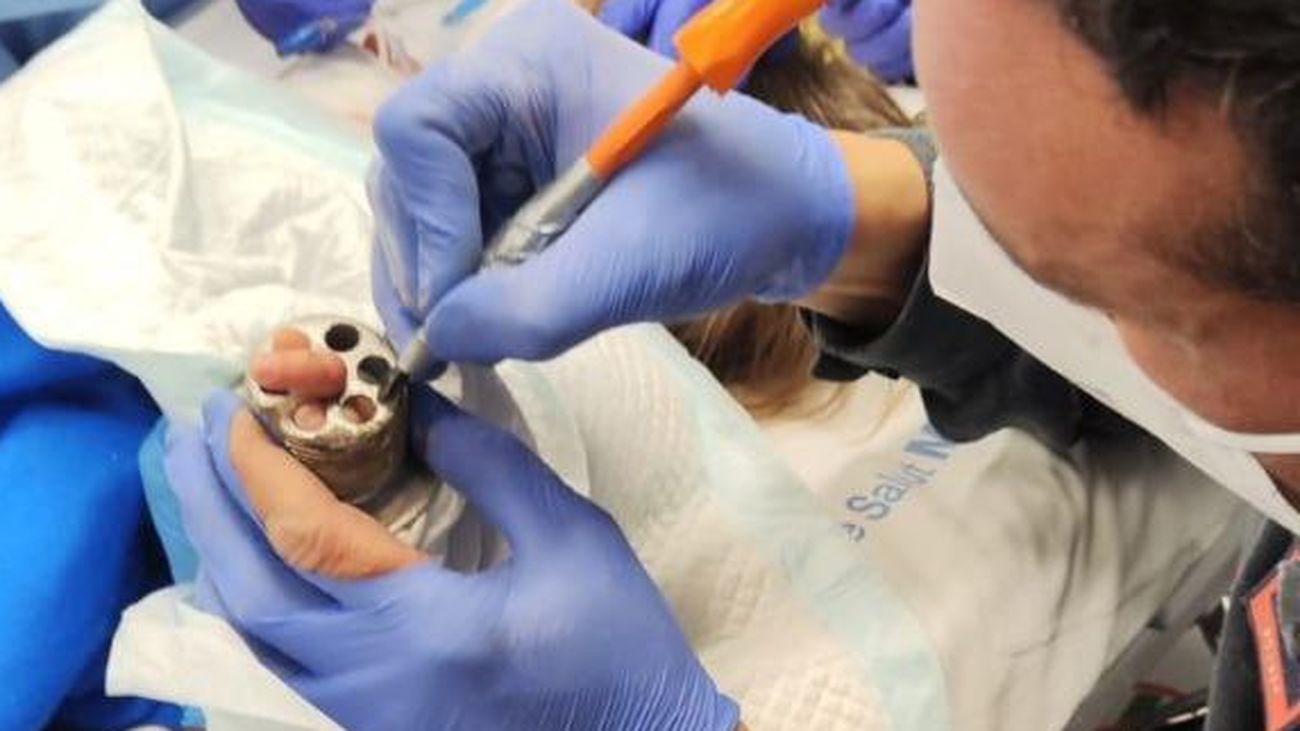The incidence rises again: consult the evolution of infections, municipality by municipality


Source: autonomous communities
* Information updated with the latest data available as of November 23.
What is the incidence of the coronavirus in your municipality? How many cases of Covid-19 does it represent? Are there more or less infections than 14 days ago? The top map shows the main variables for monitoring the pandemic, municipality by municipality. On the one hand, the total number of infections and the rate of cases per 100,000 inhabitants in 14 days (the incidence). On the other, the trend of new cases in each locality compared to two weeks ago.
To build this map, elDiario.es has compiled the figures from the Health Councils of the 17 autonomous communities and the autonomous cities of Ceuta and Melilla. Data have been obtained from the autonomous communities that have published their data on infections in each locality: practically the entire territory with the exception of the smallest municipalities of Castilla y León, Catalonia and Galicia, which do not break down the figures for the municipalities with fewer inhabitants . You can read more details about obtaining this data in the methodology.
At a global level, confirmed cases of COVID-19 are decreasing 📉 in 231 municipalities where 9% of the Spanish population lives, they are increasing 📈 in 750 localities where 66% of the population lives and they are in the plateau phase (the remain more or less the same as two weeks ago) in 46, where 4% live. The rest are very small municipalities where very few cases are registered - less than 5 every two weeks - or for which there is no information available - which represent 22% of the Spanish population.
The following graph shows the ranking of large municipalities (with more than 40,000 inhabitants) according to the number of confirmed cases in the last 14 days in relation to their population and also how the incidence has varied in the last two weeks compared to the previous two.
Heterogeneous data and absence of small municipalities
The data for each municipality used for this article show the same variable: the number of people who have tested positive for coronavirus and for whom their place of residence has been identified. Most communities include the data of positives by PCR test, antigen test and some also add the cases confirmed by rapid antibody test. This medium, which has been collecting data by municipality since the end of March 2020, calculates the trend of cases in each municipality by comparing the number of confirmed cases in the last two weeks with the infections detected in the previous two weeks.
It must be taken into account that the data of the communities are not always homogeneous among themselves due to the type of tests they include, the dates on which their figures are updated or due to changes in the publication of the data in the same month. The update date of each community depends on each one of them: most keep their figures updated weekly but some are delayed when updating their figures.
In total, the figures collected add up to more than four million cases of coronavirus in which the municipality of residence of the infected person has been identified. Of the 17 autonomies analyzed, Madrid is the city with the most infected detected in a single municipality. However, the municipalities with the highest incidence rate (cases per 100,000 inhabitants) are small localities in which an outbreak can affect a larger proportion of the population.
Many municipalities do not appear as there is no data available and some communities do not publish the total number of confirmed cases since the beginning of the epidemic. It must be taken into account that the number of cases is closely related to the ability to detect them by the health authorities. That is, the more tests or analyzes performed, the more cases detected. How many confirmed cases are there in each municipality and how is the current incidence in your locality? Check it out in the following table.
Several communities initially refused to publish data by municipality to avoid the social stigmatization of small municipalities with many infected. This is the case of the Autonomous Government of La Rioja, which initially was not going to publish data by locality and now publishes it for all municipalities.
The Balearic Islands initially refused to share their data, although in the end they published them. Extremadura, under the same criteria, initially only published 8 most populated municipalities in the region. Now it publishes the figures even by local entities, villages and districts. Castilla y León is only publishing its figures for municipalities with more than 1,000 inhabitants and La Rioja is not publishing now the figures for localities with fewer residents. They are not the only cases, practically half of the regions refused to publish their figures, arguing that they wanted to avoid the stigmatization of specific municipalities. Today, they all publish their data on COVID-19 cases by municipality.
Galicia has been the last to publish the figures by municipality, which has added to its COVID-19 data portal almost 6 months since the start of the epidemic. The Galician community does not publish the figures of the municipalities that have registered between one and nine cases in the last 14 days. Now all the autonomies publish the figures broken down by locality on their transparency portals, open data web or official pages with the situation of COVID-19.
Precisely, these data are essential to combat an epidemic: they make it possible to detect sources of contagion and act accordingly, provide more information to local administrations and regional governments of neighboring communities, and facilitate the analysis of the impact of the epidemic.
This analysis makes it possible to verify in which areas there is a higher incidence rate based on variables such as average income, percentage of the population over 65 years of age or population density. Precisely, from all administrations hundreds of statistics are published broken down by municipality: population by age, country of birth, nationality, average income, registered unemployment data, educational level or mortality rates.
Countries such as Germany, the United Kingdom or the United States publish their data on confirmed cases at the district, local authority and county level, an administrative level similar to a municipality in Spain.










